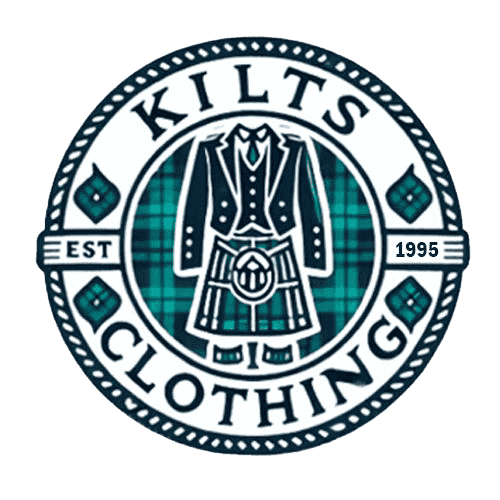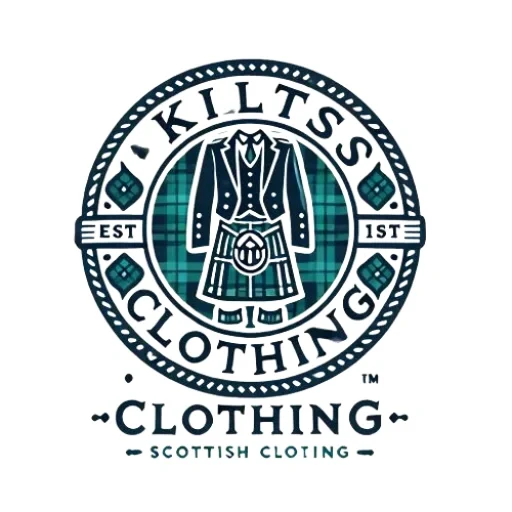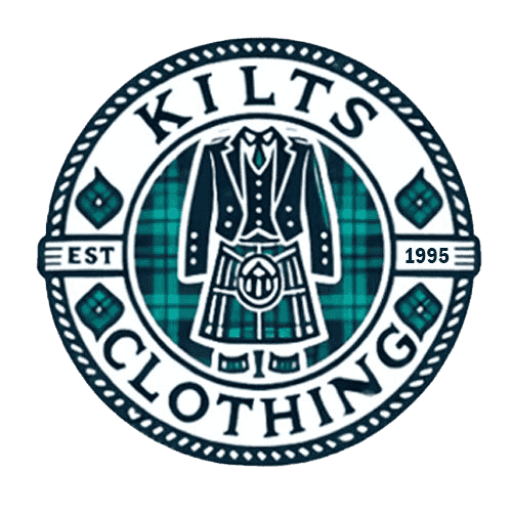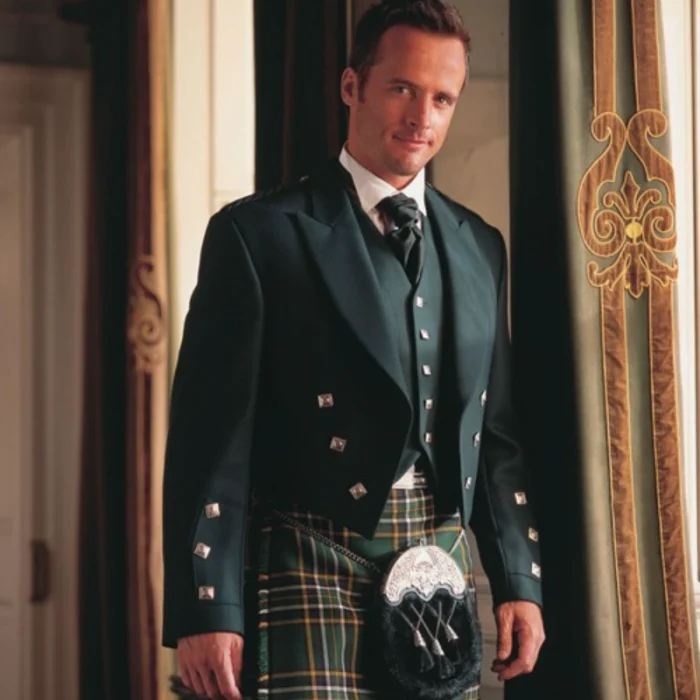Do Irish Wear Kilts? Distinguishing Fact from Myth
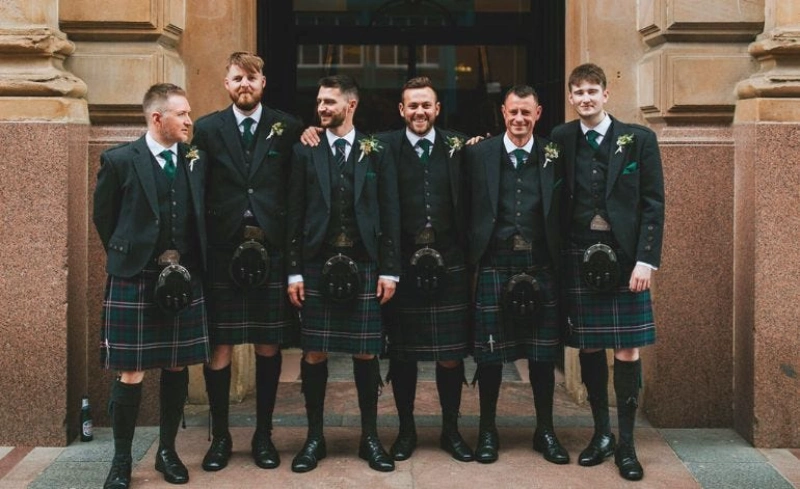
Men's kilts boast a rich history that dates back to the 16th century when they were first worn by Highland Scots to navigate the challenging Scottish landscape. Originally designed for practicality, kilts later evolved into ceremonial garments, adorned with distinctive tartan patterns that represent specific Scottish clans.
In modern times, kilts are embraced globally as symbols of Scottish heritage and pride. They are prominently featured in cultural celebrations, parades, and formal events, highlighting their enduring charm and deep historical roots.
Do the Irish Wear Kilts?
Whether the Irish wear kilts has long been a topic of interest. While kilts are more strongly associated with Scotland, Irish kilts, historically known as "feileadh mór," also hold cultural importance and are used for ceremonial purposes.
Unlike Scottish kilts, which often feature tartans tied to specific clans, Irish kilts are typically solid-colored and not linked to particular family lineages. They are commonly worn during cultural events such as St. Patrick’s Day and Gaelic festivals, allowing individuals to honor their heritage and celebrate their Celtic roots.
Though there are differences in design and usage, both Scottish and Irish kilts embody a shared tradition of cultural pride and historical significance.
The History of the Irish Kilt:
The History of Irish Kilts
Irish kilts have their roots in the ancient Celtic tribes of Ireland, where a garment known as the "brat" evolved into what we now recognize as the modern Irish kilt.
In the late 19th and early 20th centuries, Scottish Highlander immigrants shaped the Irish kilt, introducing pleated styles and tartan patterns traditionally seen in Scotland.
Irish Kilts and Tartans:
Unlike Scottish kilts, often made from tartans representing specific clans, Irish kilts are typically crafted from solid wool in shades like green, blue, or black. These kilts are commonly worn at formal events, such as weddings. They are also an essential part of Irish step-dancing costumes.
Irish Step-Dancing and Kilts:
Irish step-dancing, known for its fast foot movements and upright posture, often features the traditional Irish kilt as part of its ensemble. This dance form holds deep cultural significance in Ireland and continues to be performed globally.
Irish Kilts in Weddings:
Irish kilts are versatile enough to be dressed up for formal occasions or dressed down for a more casual look. They can be paired with casual t-shirts for a relaxed style or with formal jackets for more special events.
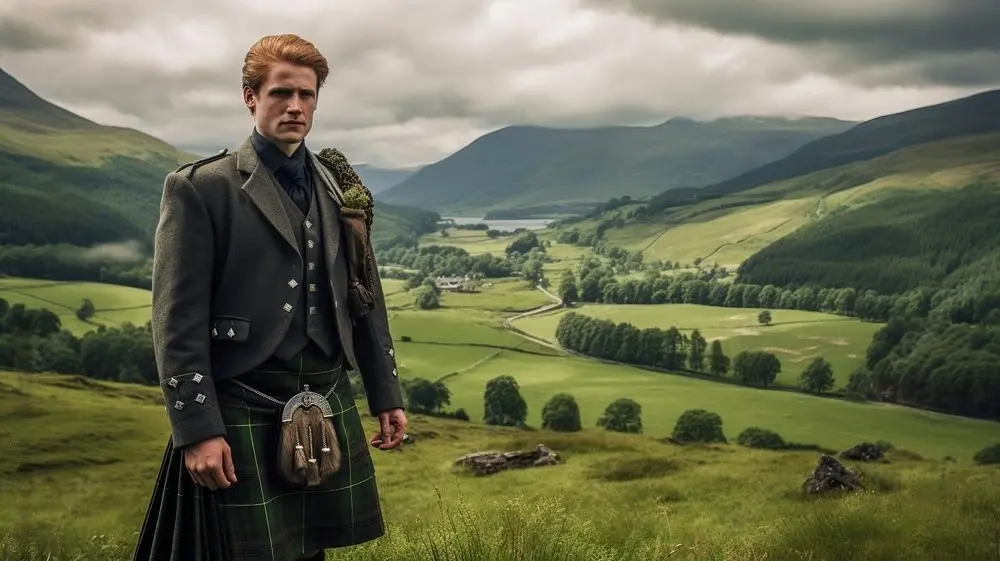
Various Types of Irish Kilts
Irish kilts are available in several styles, each showcasing unique features and cultural heritage.
The Traditional Kilt:
This classic style comprises a single, pleated woolen fabric wrapped around the body. Often paired with a waistcoat, jacket, and shirt, the traditional kilt is typically worn for ceremonial purposes and formal occasions.
Irish Fly Plaids:
Similar to Scottish attire, some Irish kilts are accompanied by a fly plaid, a long strip of cloth draped over one shoulder and fastened with a brooch. This addition brings an extra layer of elegance and tradition to the outfit.
The Casual Kilt:
A more modern variation, the casual kilt is designed for laid-back events like festivals or sporting activities. Made from lighter fabrics, it offers comfort and flexibility for casual wear.
Each type of Irish kilt reflects a different facet of Irish culture and history, showcasing this iconic garment's versatility and timeless appeal.
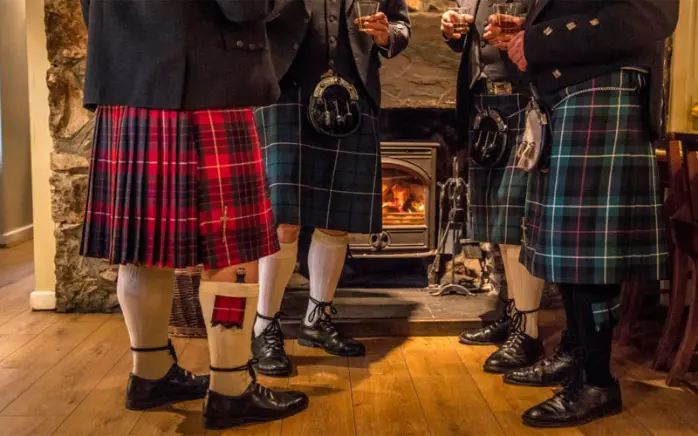
How to Wear the Irish Kilt
Choose the Appropriate Style:
Select the kilt style based on the occasion. For formal events like weddings, a traditional or wedding kilt is perfect. For casual wear or utility purposes, opt for hybrid or utility kilts.
Wear It at the Waist:
Place the kilt at your natural waist, which is higher than where you would wear regular pants. This ensures proper fit and ease of movement.
Secure with a Kilt Pin:
Fasten the front of your kilt with a kilt pin to keep the fabric in place. Position it just above the wrinkle line for a clean, stylish appearance.
Add a Sporran:
Attach a sporran to the front of your kilt. This functional accessory holds essentials while enhancing the traditional look.
Finish with Accessories:
Complete your outfit with a kilt belt featuring a decorative buckle for a refined touch. Pair your kilt with kilt hose (socks) and appropriate footwear like ghillie brogues. Depending on the event's formality, consider adding a matching jacket and vest.
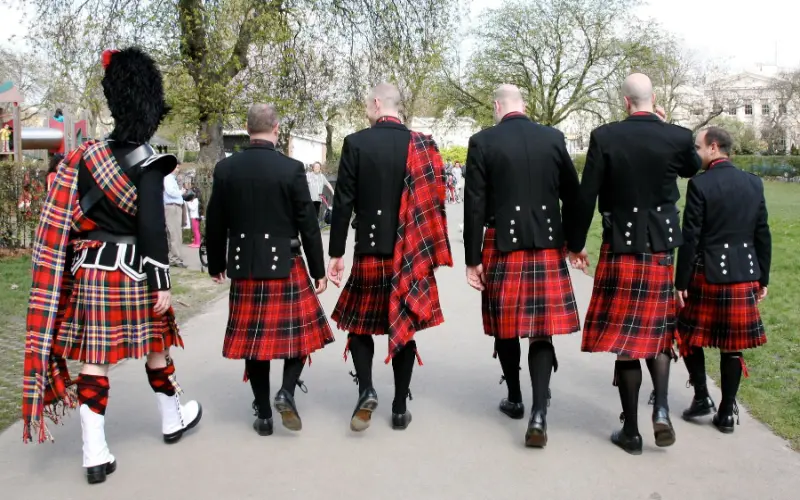
Conclusion
The Irish men's kilt symbolizes Ireland's rich cultural heritage, embodying the nation's deep-rooted traditions and history. Although Scottish kilts are more widely known, they hold their own unique place in Irish culture, blending ancient Celtic influences with elements introduced by Scottish immigrants. Whether worn during significant events like weddings, cultural performances such as step-dancing, or as an expression of pride in Irish ancestry, the Irish kilt remains a vibrant part of the nation's identity.
- By understanding the history and customs associated with the Irish kilt, individuals can gain a deeper appreciation for its cultural significance, ensuring that this iconic garment continues to thrive and be celebrated for generations to come.
